- Home
- Various Authors
Erotic Classics I
Erotic Classics I Read online
Erotic Classics I
Kama Sutra, The Memoirs of Fanny Hill, and Others
Vatsyayana, John Cleland, The Marquis de Sade, George Sand, Leopold von Sacher-Masoch, Émile Zola, and Stanislas de Rhodes
CONTENTS
The Kama Sutra of Vatsyayana
The Memoirs of Fanny Hill by John Cleland
Justine by The Marquis de Sade
Indiana by George Sand
Venus in Furs by Leopold von Sacher-Masoch
Nana by Émile Zola
The Autobiography of a Flea by Stanislas de Rhodes
About the Series
Copyright
About the Publisher
The Kama Sutra of Vatsyayana
Translated from the Sanscrit
In Seven Parts, with Preface, Introduction, and Concluding Remarks
CONTENTS
Preface
Introduction
Part I: The Vatsyayana Sutra
Chapter I: Introductory Preface
Chapter II: On the Acquisition of Dharma, Artha and Kama
Chapter III: On the Arts and Sciences to be Studied
Chapter IV: The Life of a Citizen
Chapter V: About the Kinds of Women Resorted to by the Citizens, and of Friends and Messengers
Part II: Of Sexual Union
Chapter I: Kinds of Sexual Union According to Dimensions, Force of Desire or Passion, Time
Chapter II: Of the Embrace
Chapter III: On Kissing
Chapter IV: On Pressing, or Marking, or Scratching With the Nails
Chapter V: On Biting, and the Means to be Employed With Regard to Women of Different Countries
Chapter VI: Of the Different Ways of Lying Down, and Various Kinds of Congress
Chapter VII: Of the Various Modes of Striking, and of the Sounds Appropriate to Them
Chapter VIII: About Women Acting the Part of a Man; and of the Work of a Man
Chapter IX: Of the Auparishtaka
Chapter X: Of the Way How to Begin and How to End the Congress; Different Kinds of Congress and Love Quarrels or Mouth Congress
Part III: About the Acquisition of a Wife
Chapter I: On Marriage
Chapter II: Of Creating Confidence in the Girl
Chapter III: On Courtship, and the Manifestation of the Feelings by Outward Signs and Deeds
Chapter IV: About Things to be Done Only by the Man, and the Acquisition of the Girl Thereby; Also What is to be Done by a Girl to Gain Over a Man, and Subject Him to Her
Chapter V: On Certain Forms of Marriage
Part IV: About a Wife
Chapter I: On the Manner of Living of a Virtuous Woman, and of Her Behaviour During the Absence of Her Husband
Chapter II: On the Conduct of the Elder Wife Towards the Other Wives of Her Husband, and on That of a Younger Wife Towards the Elder Ones; Also on the Conduct of a Virgin Widow Re-Married; of a Wife Disliked by Her Husband; of the Women in the King’s Harem; and Lastly on the Conduct of a Husband Towards Many Wives
Part V: About the Wives of Other Men
Chapter I: Of the Characteristics of Men and Women—The Reasons Why Women Reject the Addresses Of Men: About Men Who Have Success With Women, and About Women Who Are Easily Gained Over
Chapter II: About Making Acquaintance With the Woman, and of the Efforts to Gain Her Over
Chapter III: Examination of the State of a Woman’s Mind
Chapter IV: About the Business of a Go-Between
Chapter V: About the Love of Persons in Authority For the Wives of Other Men
Chapter VI: About the Women of the Royal Harem; and of the Keeping of One’s Own Wife
Part VI: About Courtesans
Introductory Remarks
Chapter I: Of the Causes of a Courtesan Resorting to Men; of the Means of Attaching to Herself the Man Desired; and of the Kind of Man That it is Desirable to be Acquainted With
Chapter II: Of Living Like a Wife
Chapter III: Of the Means of Getting Money; of the Signs of the Change of a Lover’s Feelings, and of the Way to Get Rid of Him
Chapter IV: About Reunion With a Former Lover
Chapter V: Of Different Kinds of Gain
Chapter VI: Of Gains and Losses; Attendant Gains and Losses; and Doubts; as Also of the Different Kinds of Courtesans
Part VII: About the Means of Attracting Others to Yourself
Chapter I: On Personal Adornment; on Subjugating the Hearts of Others; and on Tonic Medicines
Chapter II: Of the Ways of Exciting Desire, and Miscellaneous Experiments, and Recipes
Concluding Remarks
About the Author
Preface
In the literature of all countries there will be found a certain number of works treating especially the subject of love. Everywhere the subject is dealt with differently, and from various points of view. In the present publication it is proposed to give a complete translation of what is considered the standard work on love in Sanscrit literature, and which is called the Vatsyayana Kama Sutra, or Aphorisms on Love, by Vatsyayana.
While the introduction will bear with the evidence concerning the date of the writing, and the commentaries written upon it, the chapters following the introduction will give a translation of the work itself. It is, however, advisable to furnish here a brief analysis of works of the same nature, prepared by authors who lived and wrote years after Vatsya had passed away, but who still considered him as a great authority, and always quoted him as the chief guide to Hindu erotic literature.
Besides the treatise of Vatsyayana the following works on the same subject are procurable in India:—
1. The Ratirahasya, or secrets of love.
2. The Panchasakya, or the five arrows.
3. The Smara Pradipa, or the light of love.
4. The Ratimanjari, or the garland of love.
5. The Rasmanjari, or the sprout of love.
6. The Anunga Runga, or the stage of love; also called Kamaledhiplava, or a boat in the ocean of love.
The author of the Secrets of Love (No. 1) was a poet named Kukkoka. He composed his work to please one Venudutta, who was perhaps a king. When writing his own name at the end of each chapter he calls himself “Siddha patiya pandita,” i.e., an ingenious man among learned men. The work was translated into Hindi years ago, and in this the author’s name was written as Koka. And as the same name crept into all the translations into other languages in India, the book became generally known, and the subject was popularly called Koka Shastra, or doctrines of Koka, which is identical with the Kama Shastra, or doctrines of love, and the words Koka Shastra and Kama Shastra are used indiscriminately.
The work contains nearly eight hundred verses, and is divided into ten chapters, which are called Pachivedas. Some of the things treated of in this work are not to be found in the Vatsyayana, such as the four classes of women: the Padmini, Chitrini, Shankini and Hastini, as also the enumeration of the days and hours on which the women of the different classes become subject to love. The author adds that he wrote these things from the opinions of Gonikaputra and Nandikeshwara, both of whom are mentioned by Vatsyayana, but their works are not now extant. It is difficult to give any approximate idea as to the year in which the work was composed. It is only to be presumed that it was written after that of Vatsyayana, and previous to the other works on this subject that are still extant. Vatsyayana gives the names of ten authors on the subject, all of whose works he had consulted, but none of which are extant, and does not mention this one. This would tend t
o show that Kukkoka wrote after Vatsya, otherwise Vatsya would assuredly have mentioned him as an author in this branch of literature along with the others.
The author of the Five Arrows (No. 2 in the list) was one Jyotirisha. He is called the chief ornament of poets, the treasure of the sixty-four arts, and the best teacher of the rules of music. He says that he composed the work after reflecting on the aphorisms of love as revealed by the gods, and studying the opinions of Gonikaputra, Muladeva, Babhravya, Ramtideva, Nundikeshwara and Kshemandra. It is impossible to say whether he had perused all the works of these authors, or had only heard about them; anyhow, none of them appear to be in existence now. This work contains nearly six hundred verses, and is divided into five chapters, called Sayakas or Arrows.
The author of the Light of Love (No. 3) was the poet Gunakara, the son of Vechapati. The work contains four hundred verses, and gives only a short account of the doctrines of love, dealing more with other matters.
The Garland of Love (No. 4) is the work of the famous poet Jayadeva, who said about himself that he is a writer on all subjects. This treatise is, however, very short, containing only one hundred and twenty-five verses.
The author of the Sprout of Love (No. 5) was a poet called Bhanudatta. It appears from the last verse of the manuscript that he was a resident of the province of Tirhoot, the son of a Brahman named Ganeshwar, who was also a poet. The work, written in Sanscrit, gives the descriptions of different classes of men and women, their classes being made out from their age, description, conduct, etc. It contains three chapters, and its date is not known, and cannot be ascertained.
The Stage of Love (No. 6) was composed by the poet Kullianmull, for the amusement of Ladkhan, the son of Ahmed Lodi, the same Ladkhan being in some places spoken of as Ladana Mull, and in others as Ladanaballa. He is supposed to have been a relation or connection of the house of Lodi, which reigned in Hindustan from a.d. 1450–1526. The work would, therefore, have been written in the fifteenth or sixteenth century. It contains ten chapters, and has been translated into English, but only six copies were printed for private circulation. This is supposed to be the latest of the Sanscrit works on the subject, and the ideas in it were evidently taken from previous writings of the same nature.
The contents of these works are in themselves a literary curiosity. There are to be found both in Sanscrit poetry and in the Sanscrit drama a certain amount of poetical sentiment and romance, which have, in every country and in every language, thrown an immortal halo round the subject. But here it is treated in a plain, simple, matter of fact sort of way. Men and women are divided into classes and divisions in the same way that Buffon and other writers on natural history have classified and divided the animal world. As Venus was represented by the Greeks to stand forth as the type of the beauty of woman, so the Hindus describe the Padmini or Lotus woman as the type of most perfect feminine excellence, as follows:
She in whom the following signs and symptoms appear is called a Padmini. Her face is pleasing as the full moon; her body, well clothed with flesh, is soft as the Shiras or mustard flower, her skin is fine, tender and fair as the yellow lotus, never dark coloured. Her eyes are bright and beautiful as the orbs of the fawn, well cut, and with reddish corners. Her bosom is hard, full and high; she has a good neck; her nose is straight and lovely, and three folds or wrinkles cross her middle—about the umbilical region. Her yoni resembles the opening lotus bud, and her love seed (Kama salila) is perfumed like the lily that has newly burst. She walks with swan-like gait, and her voice is low and musical as the note of the Kokila bird, she delights in white raiments, in fine jewels, and in rich dresses. She eats little, sleeps lightly, and being as respectful and religious as she is clever and courteous, she is ever anxious to worship the gods, and to enjoy the conversation of Brahmans. Such, then, is the Padmini or Lotus woman.
Detailed descriptions then follow of the Chitrini or Art woman; the Shankhini or Conch woman, and the Hastini or Elephant woman, their days of enjoyment, their various seats of passion, the manner in which they should be manipulated and treated in sexual intercourse, along with the characteristics of the men and women of the various countries in Hindustan. The details are so numerous, and the subjects so seriously dealt with, and at such length, that neither time nor space will permit of their being given here.
One work in the English language is somewhat similar to these works of the Hindus. It is called Kalogynomia: or the Laws of Female Beauty, being the elementary principles of that science, by T. Bell, M.D., with twenty-four plates, and printed in London in 1821. It treats of Beauty, of Love, of Sexual Intercourse, of the Laws regulating that Intercourse, of Monogamy and Polygamy, of Prostitution, of Infidelity, ending with a catalogue raisonnée of the defects of female beauty.
Other works in English also enter into great details of private and domestic life. The Elements of Social Science, or Physical, Sexual and Natural Religion, by a Doctor of Medicine, London, 1880, and Every Woman’s Book, by Dr. Waters, 1826. To persons interested in the above subjects these works will be found to contain such details as have been seldom before published, and which ought to be thoroughly understood by all philanthropists and benefactors of society.
After a perusal of the Hindu work, and of the English books above mentioned, the reader will understand the subject, at all events from a materialistic, realistic and practical point of view. If all science is founded more or less on a stratum of facts, there can be no harm in making known to mankind generally certain matters intimately connected with their private, domestic, and social life.
Alas! complete ignorance of them has unfortunately wrecked many a man and many a woman, while a little knowledge of a subject generally ignored by the masses would have enabled numbers of people to have understood many things which they believed to be quite incomprehensible, or which were not thought worthy of their consideration.
Introduction
It may be interesting to some persons to learn how it came about that Vatsyayana was first brought to light and translated into the English language. It happened thus. While translating with the pundits the ‘Anunga runga, or the stage of love,’ reference was frequently found to be made to one Vatsya. The sage Vatsya was of this opinion, or of that opinion. The sage Vatsya said this, and so on. Naturally questions were asked who the sage was, and the pundits replied that Vatsya was the author of the standard work on love in Sanscrit literature, that no Sanscrit library was complete without his work, and that it was most difficult now to obtain in its entire state. The copy of the manuscript obtained in Bombay was defective, and so the pundits wrote to Benares, Calcutta and Jeypoor for copies of the manuscript from Sanscrit libraries in those places. Copies having been obtained, they were then compared with each other, and with the aid of a Commentary called Jayamangla a revised copy of the entire manuscript was prepared, and from this copy the English translation was made. The following is the certificate of the chief pundit:—
“The accompanying manuscript is corrected by me after comparing four different copies of the work. I had the assistance of a Commentary called Jayamangla for correcting the portion in the first five parts, but found great difficulty in correcting the remaining portion, because, with the exception of one copy thereof which was tolerably correct, all the other copies I had were far too incorrect. However, I took that portion as correct in which the majority of the copies agreed with each other.”
The Aphorisms on Love, by Vatsyayana, contains about one thousand two hundred and fifty slokas or verses, and are divided into parts, parts into chapters, and chapters into paragraphs. The whole consists of seven parts, thirty-six chapters, and sixty-four paragraphs. Hardly anything is known about the author. His real name is supposed to be Mallinaga or Mrillana, Vatsyayana being his family name. At the close of the work this is what he writes about himself:
“After reading and considering the works of Babhravya and other ancient authors, and thinking
over the meaning of the rules given by them, this treatise was composed, according to the precepts of the Holy Writ, for the benefit of the world, by Vatsyayana, while leading the life of a religious student at Benares, and wholly engaged in the contemplation of the Deity. This work is not to be used merely as an instrument for satisfying our desires. A person acquainted with the true principles of this science, who preserves his Dharma (virtue or religious merit), his Artha (worldly wealth) and his Kama (pleasure or sensual gratification), and who has regard to the customs of the people, is sure to obtain the mastery over his senses. In short, an intelligent and knowing person, attending to Dharma and Artha and also to Kama, without becoming the slave of his passions, will obtain success in everything that he may do.”
It is impossible to fix the exact date either of the life of Vatsyayana or of his work. It is supposed that he must have lived between the first and the sixth centuries of the Christian era, on the following grounds:—He mentions that Satkarni Srtvahan, a king of Kuntal, killed Malayevati his wife with an instrument called kartari by striking her in the passion of love, and Vatsya quotes this case to warn people of the danger arising from some old customs of striking women when under the influence of this passion. Now this king of Kuntal is believed to have lived and reigned during the first century A.C., and consequently Vatsya must have lived after him. On the other hand, Virahamihira, in the eighteenth chapter of his Brihatsanhita, treats of the science of love, and appears to have borrowed largely from Vatsyayana on the subject. Now Virahamihira is said to have lived during the sixth century a.d., and as Vatsya must have written his works previously, therefore not earlier than the first century, A.C., and not later than the sixth century a.d., must be considered as the approximate date of his existence.

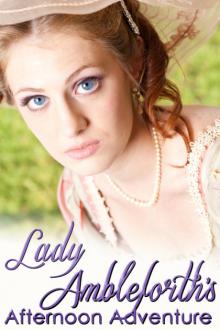 Lady Ambleforth's Afternoon Adventure by Ann Lethbridge, Barbara Monajem, Annie Burrows, Elaine Golden, Julia Justiss and Louise Allen
Lady Ambleforth's Afternoon Adventure by Ann Lethbridge, Barbara Monajem, Annie Burrows, Elaine Golden, Julia Justiss and Louise Allen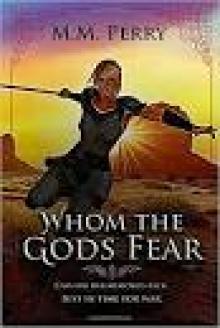 Gods & Mortals
Gods & Mortals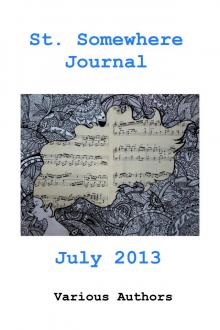 St. Somewhere Journal, July 2013
St. Somewhere Journal, July 2013 firstwriter.com First Short Story Anthology
firstwriter.com First Short Story Anthology Warcry: The Anthology
Warcry: The Anthology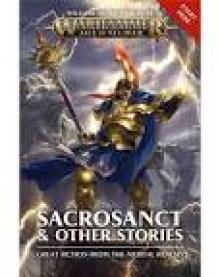 Sacrosanct & Other Stories
Sacrosanct & Other Stories Ultimate Heroes Collection
Ultimate Heroes Collection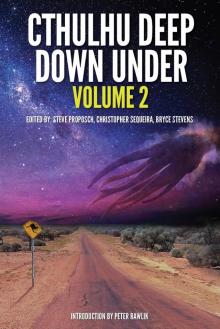 Cthulhu Deep Down Under Volume 2
Cthulhu Deep Down Under Volume 2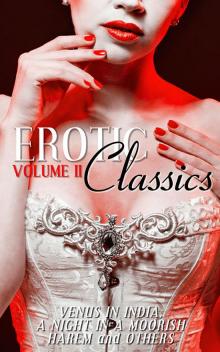 Erotic Classics II
Erotic Classics II Dynasties: The Elliotts, Books 1-6
Dynasties: The Elliotts, Books 1-6 Dynasties:The Elliots, Books 7-12
Dynasties:The Elliots, Books 7-12 International Speculative Fiction #4
International Speculative Fiction #4 Fyreslayers
Fyreslayers One Night In Collection
One Night In Collection Mortal Crimes 2
Mortal Crimes 2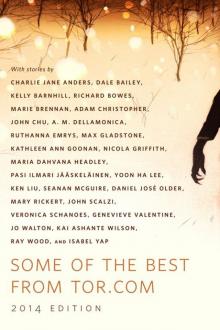 Some of the Best from Tor.com
Some of the Best from Tor.com Howl & Growl: A Paranormal Romance Boxed Set
Howl & Growl: A Paranormal Romance Boxed Set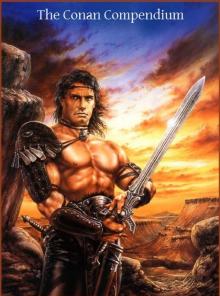 The Conan Compendium
The Conan Compendium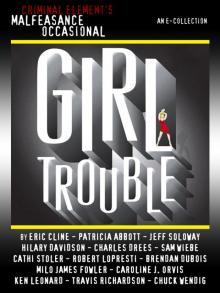 The Malfeasance Occasional
The Malfeasance Occasional Brides of Penhally Bay - Vol 4
Brides of Penhally Bay - Vol 4 Brides of Penhally Bay - Vol 2
Brides of Penhally Bay - Vol 2 Brides of Penhally Bay - Vol 1
Brides of Penhally Bay - Vol 1 School's in Session
School's in Session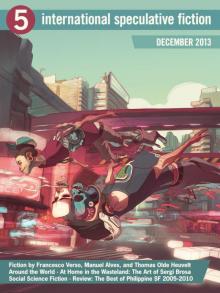 International Speculative Fiction #5
International Speculative Fiction #5 Erotic Classics I
Erotic Classics I Legends: Stories in Honor of David Gemmell
Legends: Stories in Honor of David Gemmell Mortal Crimes 1
Mortal Crimes 1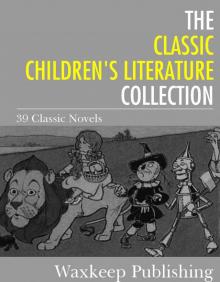 The Classic Children's Literature Collection: 39 Classic Novels
The Classic Children's Literature Collection: 39 Classic Novels Don't Read in the Closet volume one
Don't Read in the Closet volume one Some of the Best from Tor.com: 2014: A Tor.Com Original
Some of the Best from Tor.com: 2014: A Tor.Com Original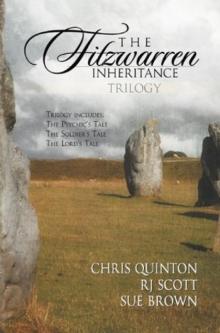 The Fitzwarren Inheritance
The Fitzwarren Inheritance All Things Zombie: Chronology of the Apocalypse
All Things Zombie: Chronology of the Apocalypse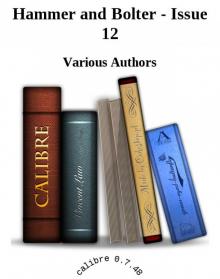 Hammer and Bolter - Issue 12
Hammer and Bolter - Issue 12 Kiss Kiss
Kiss Kiss Dog Stories
Dog Stories Bad Blood Collection
Bad Blood Collection